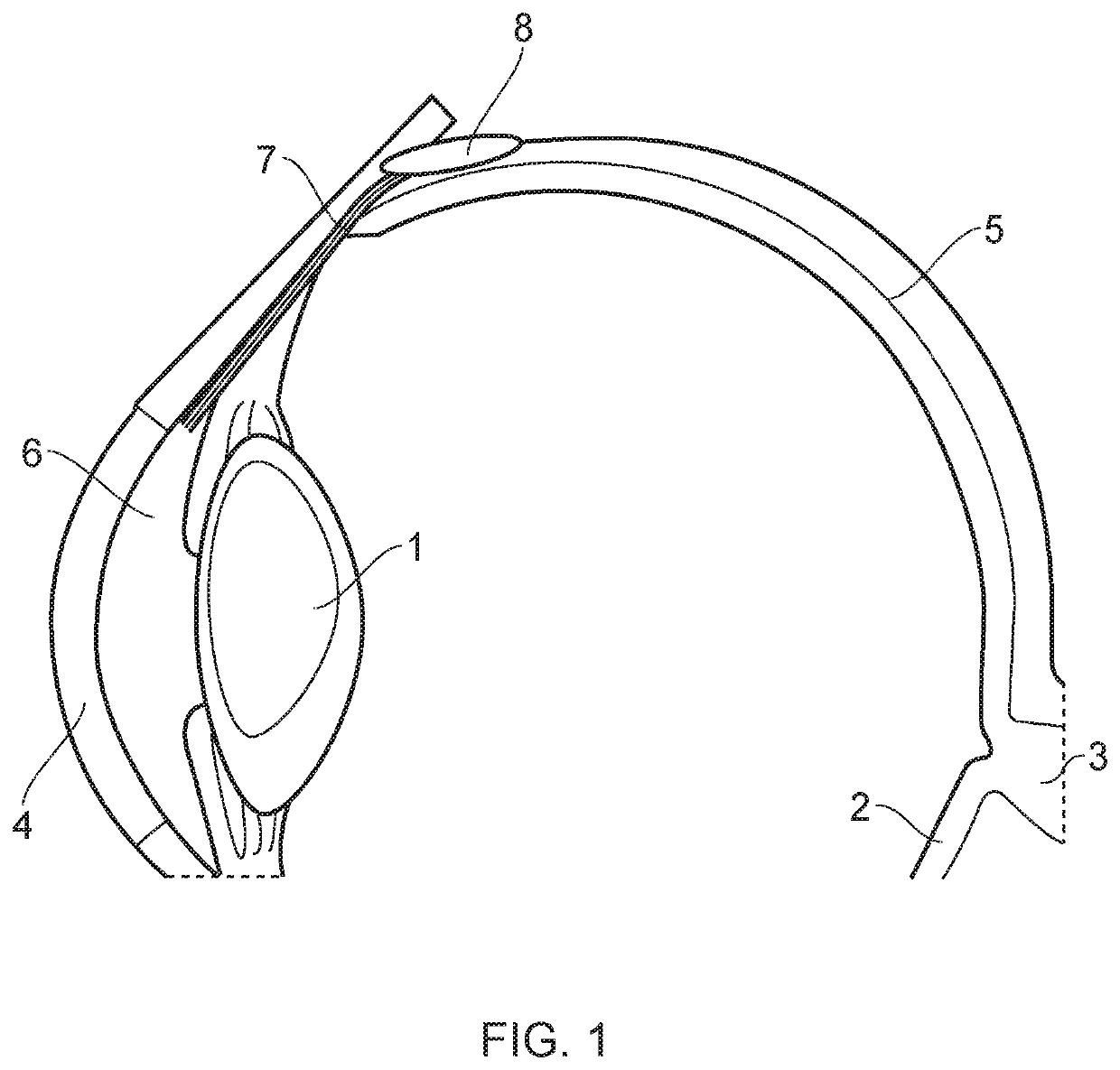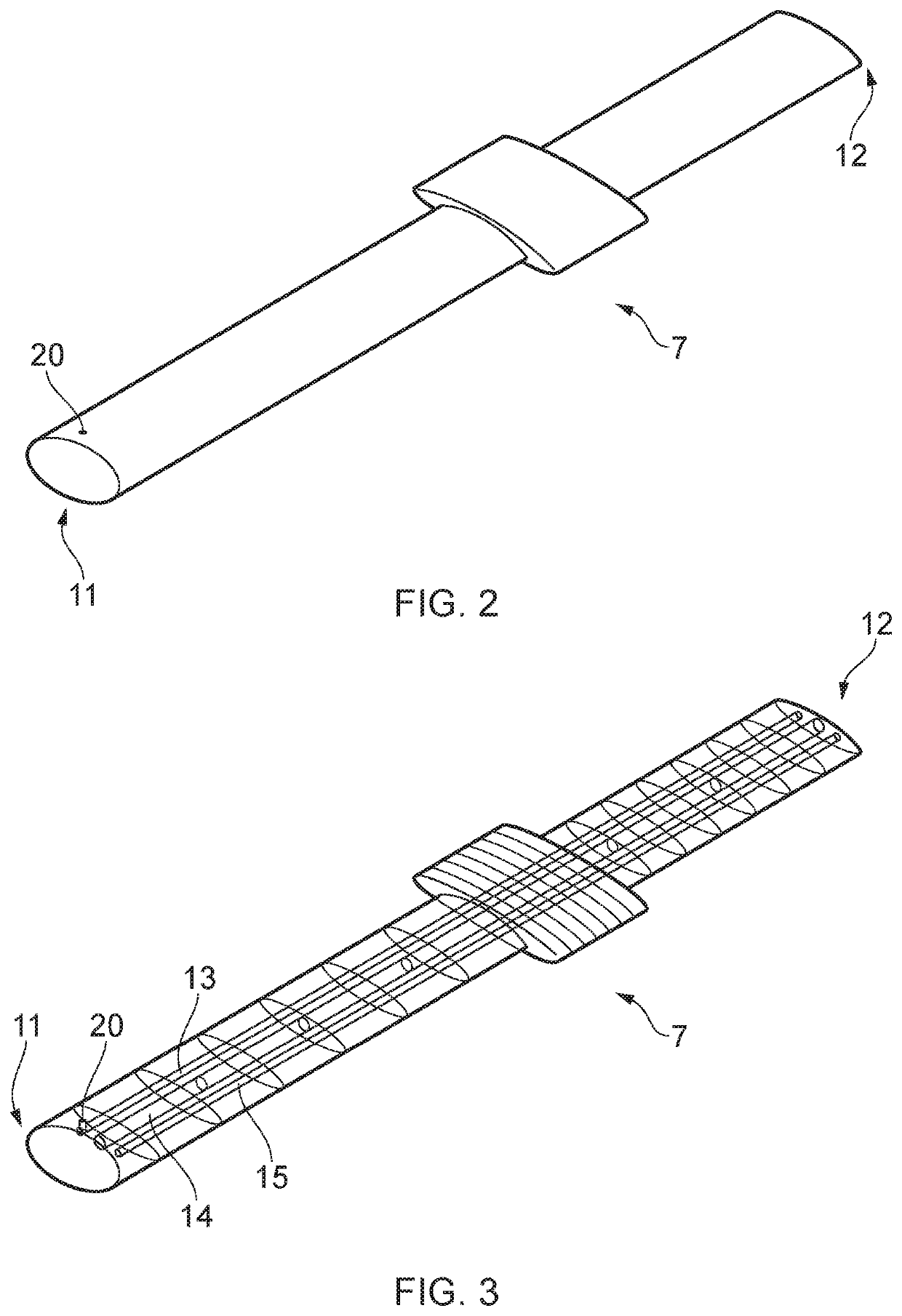Drainage device and methods
a technology of a draining device and a gill, which is applied in the field of gills, can solve the problems of inability to control the lowering of iop and adjust it after surgery using conventional gills, failure of devices, and most contemporary gills not achieving the required iop level. , to achieve the effect of reducing or preventing sideways/lateral movement and/or rotation, improving pressure distribution, and reducing or preventing sideways
- Summary
- Abstract
- Description
- Claims
- Application Information
AI Technical Summary
Benefits of technology
Problems solved by technology
Method used
Image
Examples
Embodiment Construction
)
[0084]FIG. 1 illustrates schematically an eye, e.g. of a human, showing the lens 1, retina 2, optic nerve 3, cornea 4, sclera 5 and anterior chamber 6. A glaucoma drainage device (GDD) 7 is used to fluidly connect the anterior chamber 6 to a bleb 8 in the subconjunctival space following trabeculectomy so as to lower the intra-ocular pressure (IOP). The GDD 7 in accordance with a first embodiment is shown in detail in FIGS. 2 to 9.
Shape of the Device
[0085]As shown in FIG. 2, the GDD 7 is a triple-lumen tube having a first end 11 and a second end 12 opposite the first end. FIG. 3 is an ‘X-ray’ type image showing three lumens 13, 14, 15 extending from the first end to the second end. When in use, the first end 11 is for locating in the anterior chamber 6 and the second end is for locating in the subconjunctival space to discharge aqueous humour into the bleb 8.
[0086]The tube has a first end face 16 at the first end 11, and a second end face 17 at the second end 12. As best shown in FI...
PUM
| Property | Measurement | Unit |
|---|---|---|
| aspect ratio | aaaaa | aaaaa |
| diameter | aaaaa | aaaaa |
| diameter | aaaaa | aaaaa |
Abstract
Description
Claims
Application Information
 Login to View More
Login to View More - R&D
- Intellectual Property
- Life Sciences
- Materials
- Tech Scout
- Unparalleled Data Quality
- Higher Quality Content
- 60% Fewer Hallucinations
Browse by: Latest US Patents, China's latest patents, Technical Efficacy Thesaurus, Application Domain, Technology Topic, Popular Technical Reports.
© 2025 PatSnap. All rights reserved.Legal|Privacy policy|Modern Slavery Act Transparency Statement|Sitemap|About US| Contact US: help@patsnap.com



